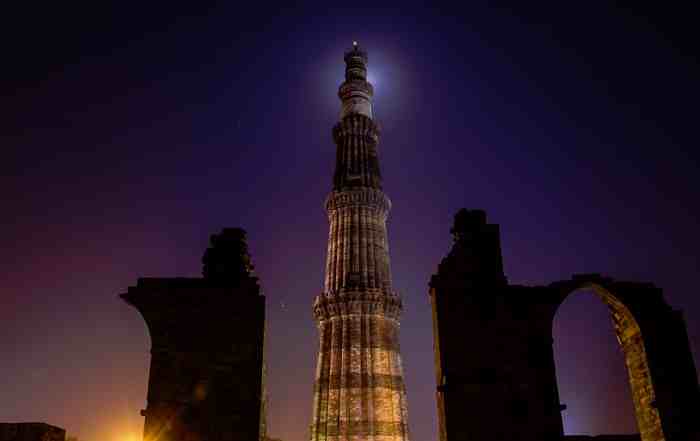Qutum Minar
One of the greatest minaret in India
Qutub Minar or Qutb Minar, a 73 m (240 ft.) high tower made of red sandstone and marble is not only the highest brick minaret in the world but also one of the most famous historical structures of India. The construction of this tower of victory was started by the founder of the Mamluk Dynasty in Delhi, Qutb ud-Din Aibak and completed by his successor and son-in-law Iltutmish. Located in the heart of Delhi, India, visible from different parts of the city attracts thousands of visitors every day. It is one of the most popular tourist spots in India and a must visit tourist spot both national and international.
History of this Colossal Tower
Qutb ud-Din Aibak, the founder of the Turkish rule in north-western India and also of the Mamluk Dynasty in Delhi commissioned the construction of this monument in 1192 AD. Aibak dedicated the minaret to the Muslim Sufi mystic, saint and scholar of the Chishti Order, Qutbuddin Bakhtiar Kaki. Different beliefs surround the origin of the minaret. While some sources believe it was constructed as a tower of victory marking the beginning of Muslim dominion in India, some others say it served the muezzins who called the faithful to prayer from the minaret. Uncertainty hovers around naming of the tower with some suggesting it was named after the Sufi saint, Qutbuddin Bakhtiar Kaki while others believe it was named after Aibak himself.
The tower was completed by Aibak's son-in-law and successor Shams-ud-din Iltutmish, regarded as the founder of the Delhi Sultanate, in 1220. Iltutmish added three more storeys to the monument. This historical monument faced a few natural disasters. A lightning hit the top storey of the minaret in 1369 AD, knocking it off entirely. The then ruler of the Sultanate of Delhi, Sultan Firuz Shah Tughlaq took charge of its restoration and constructed two more storeys to the minaret made of marble and red sandstone. Again when an earthquake damaged it in 1505, the then Sultan of Delhi, Sikandar Lodi, reconstructed the top two storeys of the minaret with marbles. Parso-Arabic and Nagari characters engraved in various sections of the minaret speak about the history of its construction. The minaret faced the wrath of nature yet again when a major earthquake on September 1, 1803 damaged it severely. In 1828, it was renovated by Major Robert Smith of the British Indian Army, who installed a cupola atop the tower. However in 1848, as instructed by the then Governor General of India, Henry Hardinge, 1st Viscount Hardinge, the cupola was uninstalled from the tower and placed in the east of it where the cupola remains situated.